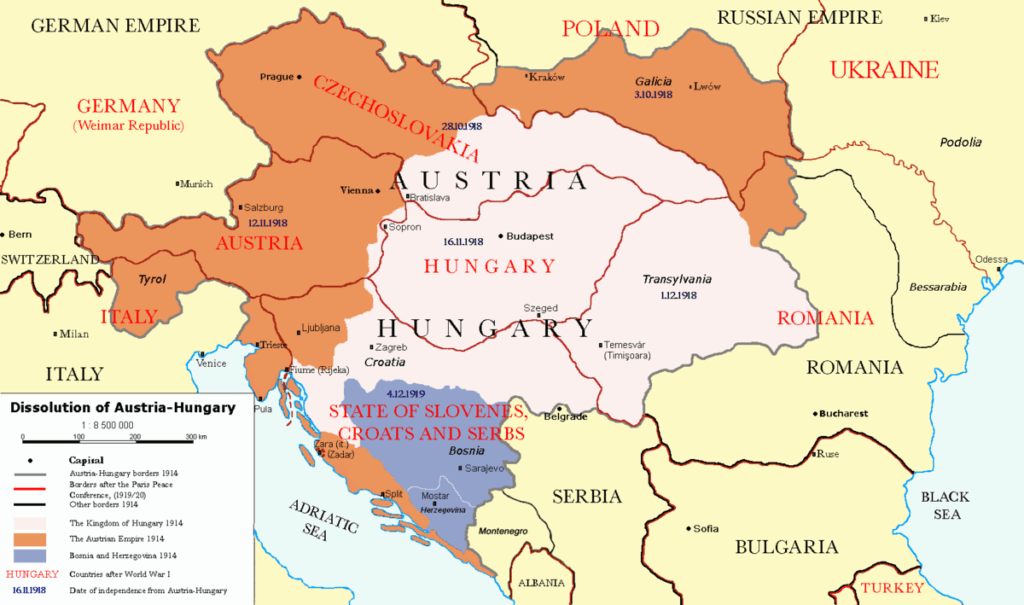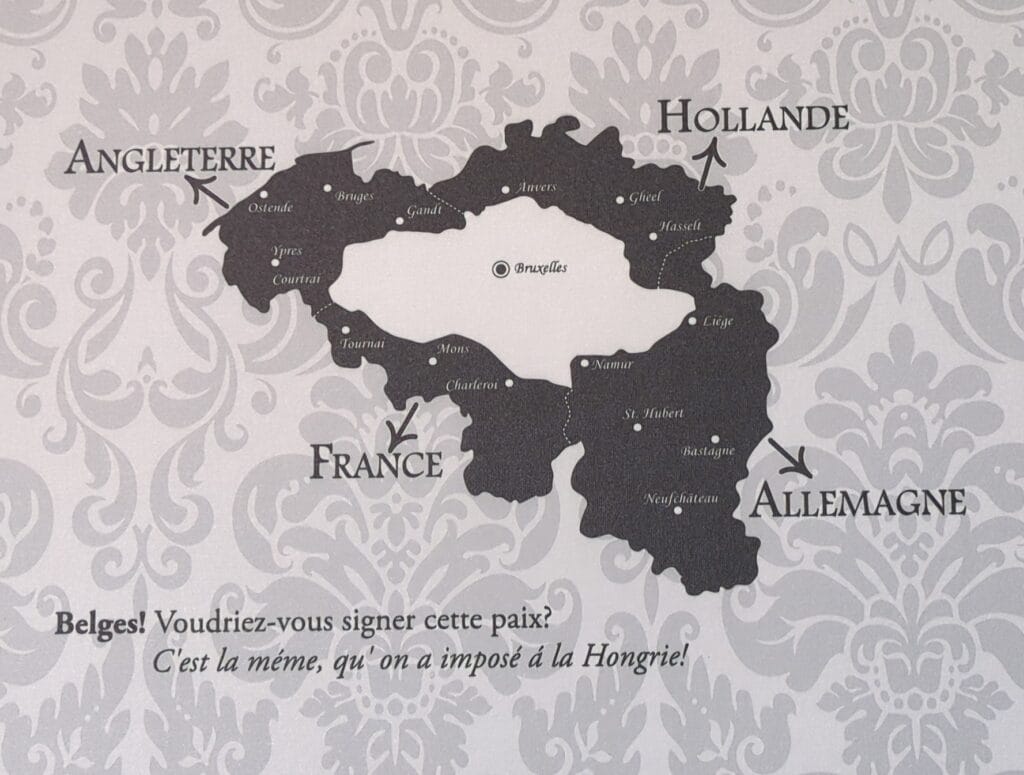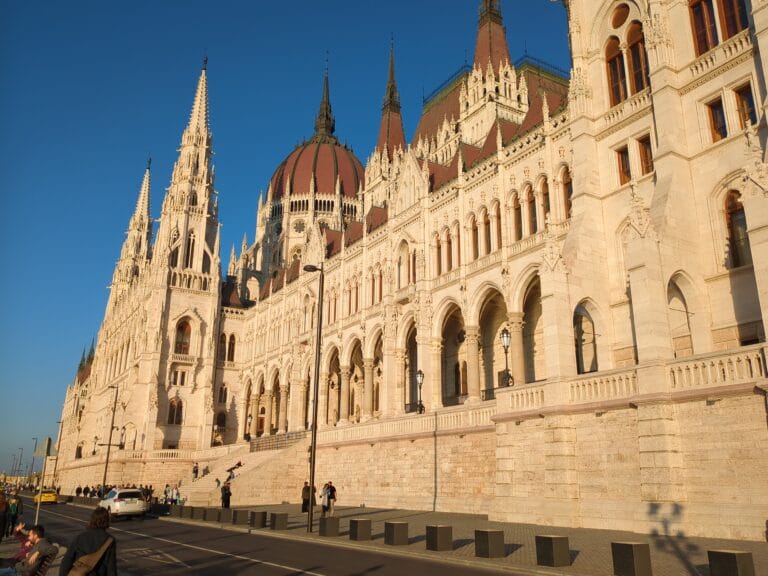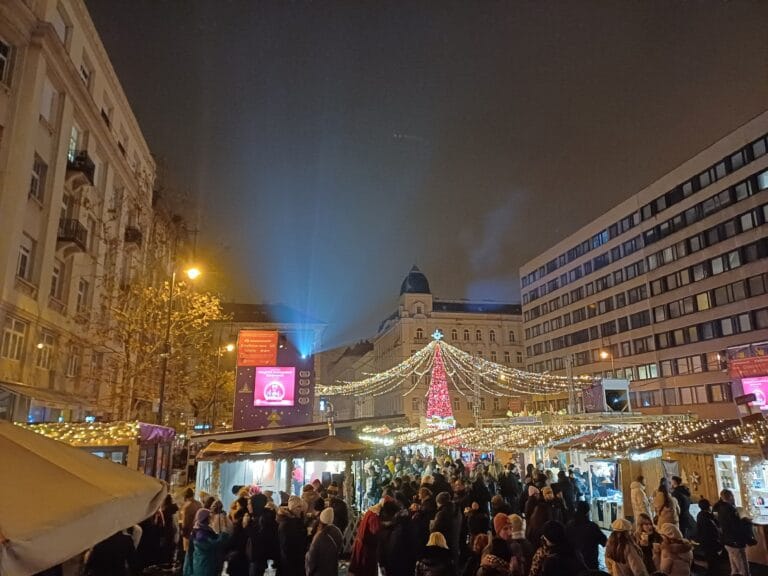The Trianon-Museum
There are two castles in Várpalota. One dates back to the Middle Ages and played an important role in the fight against the Turks. Construction of the second castle began in 1721 by the Zichy family. Since 2004, the second castle has housed the Trianon Museum.
The Trianon Museum is the only institution in the Carpathian Basin that focuses on the peace treaty after the First World War and its consequences to this day. The material presented in the museum covers both the history and the consequences of the Trianon Treaty with regard to the Carpathian Basin. This history includes the events of the First World War, the armistice and the collective reprisals suffered by the Hungarians after the war.

For us, as Belgians, the First World War is of course mainly associated with the Yser Front, but Hungary was then part of the Austro-Hungarian Empire, which fought alongside Germany on the other side of the front. So it is very instructive to see that side of things too. For the Hungarians, it was a traumatic event. On 4 June 1920, in Trianon, a hamlet near Versailles, the Treaty of Trianon was signed between the victors of the First World War and Hungary. With a single stroke of the pen, Hungary lost 71.5% of its territory and 13 of its 21 million inhabitants. It also lost a large part of its raw materials and industrial production.

For years, Hungary asked for the treaty to be revised, but this request fell on deaf ears in Paris and London, although it was met with understanding in Berlin and Rome. As a result, Hungary sided with Berlin and Rome in the Second World War and once again found itself on the losing side.
The museum is beautifully designed. Várpalota is, after all, only a small provincial town, but this museum far exceeds that level. It is definitely worth a visit. It is a pity that all the texts in the museum are only available in Hungarian, so a translation app is essential. The museum also has a second part, the Great Hungarian Park, a few kilometres from the town, where you can see, among other things, the metre-high models of the Millennium Memorial Columns that were inaugurated in 1896. But that park is for a next visit.







